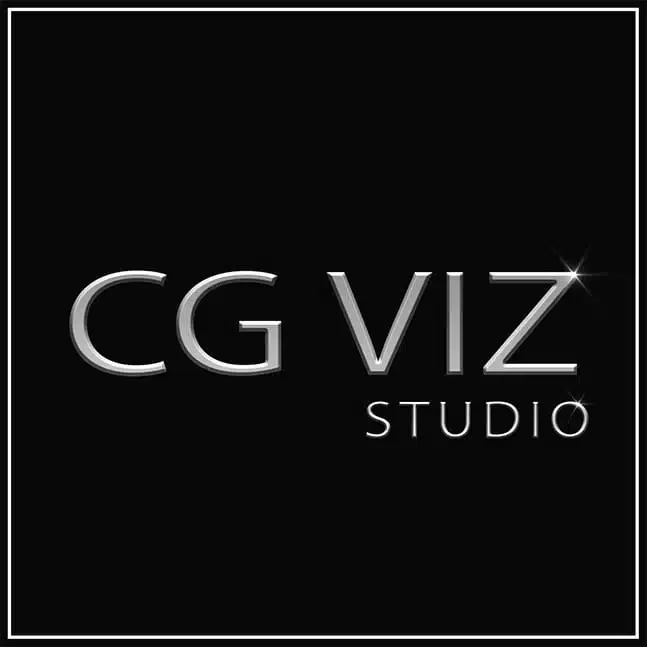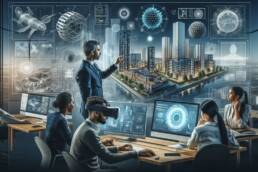The article ‘Leveraging 3D Product Visualization to Transform Prototype Showcasing’ discusses the paradigm shift in prototype showcasing through the adoption of 3D visualization technologies. It delves into how 3D product visualization has revolutionized the way prototypes are presented, enhancing client engagement, streamlining design processes, and impacting marketing and sales strategies. The article also explores the technological advancements in 3D rendering and animation, presents case studies of successful implementations, and looks ahead to future trends in the field.
Key Takeaways
- 3D visualization has significantly evolved prototype showcasing, offering virtual reality experiences and real-time design iterations.
- Interactive 3D models and immersive previews in marketing and sales lead to customized buyer experiences and effective omnichannel strategies.
- Advancements in software and animation techniques have enabled photorealistic renderings that demonstrate product functionality vividly.
- Case studies from industries like automotive and architecture illustrate the transformative impact of 3D visualization on business practices.
- Future trends in 3D visualization include the integration of virtual and augmented reality, sustainable virtual prototyping, and next-gen technologies.
The Evolution of Prototype Showcasing: Embracing 3D Visualization
From Concept to Virtual Reality: The Journey of a Prototype
We’ve witnessed a transformative shift in prototype showcasing, moving from physical models to dynamic 3D visualizations. This evolution not only saves time and resources but also allows for a more immersive experience. The journey of a prototype now begins with a concept that quickly transitions into a virtual reality, offering stakeholders a tangible vision of the final product.
- Initial Concept Sketches
- 3D Modeling
- Texturing and Material Application
- Lighting and Rendering
- Interactive Features Implementation
By leveraging 3D visualization, we can iterate designs in real-time, ensuring that every detail aligns with the client’s vision before a single physical model is ever produced.
The ability to interact with a prototype in a virtual environment has revolutionized client presentations. Clients can now explore every angle, modify colors and textures, and even simulate the product in various environments, leading to more informed decisions and heightened engagement.
Enhancing Client Engagement with Interactive 3D Models
We’ve witnessed a paradigm shift in how we present prototypes to clients. By harnessing the power of interactive 3D models, we’re not just showing a concept; we’re providing an experience. Clients can now interact with our prototypes, rotating, zooming, and dissecting them in real-time. This level of engagement was unimaginable with traditional 2D blueprints or static models.
Interactive 3D visualization is more than a mere presentation tool; it’s a communication bridge. It allows clients to truly understand the product, leading to more informed decisions and a stronger buy-in. Here’s how we’ve seen it transform the client experience:
- Clients gain a deeper understanding of the product’s features and potential.
- Real-time interaction fosters a collaborative environment for feedback.
- Customization options become vividly clear, enhancing the personal connection to the product.
By leveraging 3D visualization in manufacturing processes, we enhance collaboration, reduce time-to-market, improve quality control, enable cost-effective prototyping, and boost interactive customer engagement.
The benefits are clear, and the results speak for themselves. Clients are more engaged, more satisfied, and more likely to move forward with confidence.
Streamlining Design Iterations and Feedback with Real-Time Visualization
We’ve witnessed a transformative shift in prototype showcasing with the advent of real-time visualization. This technology allows us to present interactive 3D models that clients can explore and manipulate, fostering a deeper understanding of the design. Feedback cycles are significantly shortened, as clients can instantly see the impact of changes, leading to a more efficient design process.
- Benefits of Real-Time Visualization:
- Enhanced client engagement
- Immediate feedback implementation
- Reduced time to market
By integrating real-time visualization into our workflow, we not only improve collaboration with clients but also empower our design teams to make informed decisions swiftly.
The use of advanced rendering engines and extensive material libraries has been crucial in achieving high-quality visual fidelity that closely mirrors the final product. This level of detail ensures that feedback is precise and actionable, streamlining the iteration process. As we continue to embrace these technologies, we foresee a future where prototype showcasing becomes an even more dynamic and collaborative experience.
The Impact of 3D Product Visualization on Marketing and Sales
Revolutionizing Product Launches with Immersive Previews
We’ve entered an era where traditional product launches are rapidly giving way to immersive, interactive experiences. By leveraging 3D product visualization, we can create captivating previews that not only showcase the features of a prototype but also allow potential customers to explore products in a virtual environment. This approach has proven to significantly enhance customer engagement and anticipation ahead of a product’s release.
Immersive previews are more than just static images; they’re dynamic, allowing for real-time interaction that can lead to immediate feedback and heightened interest. Here’s how we’re transforming product launches:
- Providing a virtual hands-on experience before the product hits the market
- Enabling customization and exploration of product variants in 3D
- Generating buzz with shareable, interactive 3D content
Embracing 3D visualization technology means we can deliver a more comprehensive and engaging preview experience, setting the stage for a successful market entry.
Investing in 3D visualization is not just about the wow factor; it’s a strategic move that aligns with modern consumer expectations. As we continue to explore the potential of 3D animation in retail, offering immersive product experiences becomes a cornerstone for reshaping customer interaction and sales.
Customizing the Buyer Experience with Configurable 3D Visuals
We understand the power of customization in enhancing the buyer’s journey. By leveraging CAD data and visual configuration tools, we enable customers to virtually assemble and visualize their desired products in 3D. This not only empowers them to make informed decisions but also elevates their engagement with the product. The immediate visualization of final configurations significantly enriches the customer experience.
Our approach to 3D product visualization is not just about aesthetics; it’s about providing a functional space where customers can interact with a product’s various options and features.
Here’s how we streamline the process:
- Integrate existing CAD files for real-time 3D visualization
- Utilize visual configuration for an immersive experience
- Employ CAD automation for instant generation of configurable product files
By doing so, we not only cater to the needs of our customers but also enhance our own operational efficiencies, particularly in training programs and aftermarket sales.
Leveraging 3D Assets for Omnichannel Marketing Strategies
We understand the power of 3D visualization in creating a cohesive and engaging customer experience across all marketing channels. By utilizing 3D assets, we can craft interactive experiences that not only captivate customers but also provide them with a detailed understanding of our products before making a purchase.
High-end 3D visualization services revolutionize marketing with interactive experiences, personalized shopping, and increased customer engagement, leading to higher sales conversions and reduced return rates.
- Personalization: Tailor experiences to individual customer preferences.
- Consistency: Maintain brand image across various platforms.
- Engagement: Encourage interaction with products in a virtual environment.
- Analytics: Gain insights from customer interactions with 3D visuals.
By integrating 3D visuals into our omnichannel strategy, we ensure a seamless transition from online to offline touchpoints, enhancing the overall brand experience and fostering customer loyalty.
Technological Advancements in 3D Rendering and Animation
Cutting-Edge Software and Tools for Realistic Renderings
In our quest to achieve the most lifelike renderings, we’ve embraced cutting-edge software and tools that are transforming the landscape of 3D product visualization. Advanced rendering engines, both integrated within CAD software and as standalone solutions, are pivotal in creating hyper-realistic visuals that captivate and convince. These engines, when paired with extensive material and texture libraries, allow us to craft images that are nearly indistinguishable from real-life products.
By leveraging the full potential of these sophisticated tools, we can unlock new possibilities in product presentation, making every detail and texture come to life with stunning clarity.
Choosing the right visualization platform is equally crucial. It should offer intuitive 3D manipulation tools and functionalities such as part highlighting and search capabilities. This ensures that CAD data is not only accurately represented but also easily adjustable for administrators within the visualization workflow.
Here’s a glimpse at the considerations we take into account when selecting software and tools for our rendering processes:
- Rendering Engines: Integration with CAD, standalone options, and ease of management.
- Material and Texture Libraries: Availability and quality for realistic product representation.
- Visualization Platforms: User-friendly interfaces with advanced features for data manipulation.
- Data Extraction: Compatibility with CAD models and standardized formats for seamless integration.
Our commitment to utilizing the best software and tools available is reflected in the quality of our renderings, which continue to set industry standards and drive innovation in prototype showcasing.
The Role of Animation in Demonstrating Product Functionality
We understand that animation is not just about bringing visuals to life; it’s a powerful tool for demonstrating product functionality. Animations can simplify complex concepts, making them easily digestible for clients and stakeholders. By animating the moving parts and mechanisms, we provide a clear understanding of how a product works, which is essential for effective communication and marketing.
Interactive 3D animations enhance user engagement, offering a hands-on experience without the physical product. This approach not only boosts conversions but also aids in comprehensive product visualization. Here’s how we integrate animation into our workflow:
- Conceptualization: We begin by understanding the product’s unique features and functions.
- Storyboarding: Next, we create a visual script that outlines the animation sequence.
- Animation: Using state-of-the-art software, we animate the product, focusing on functionality.
- Review and Refinement: We then review the animation with stakeholders, making adjustments as needed.
By leveraging animation, we transform static CAD files into dynamic visual stories that resonate with audiences and provide an immersive experience.
Investing in 3D animation is not just about aesthetics; it’s about creating a strategic advantage in showcasing and understanding products. As we continue to push the boundaries of 3D visualization, we remain committed to delivering animations that are not only visually stunning but also informative and functional.
Achieving Photorealism: Techniques and Best Practices
In our quest to achieve photorealism in 3D product visualization, we meticulously harness advanced rendering engines, both integrated within CAD software and as standalone solutions. These engines are pivotal in creating hyper-realistic visuals that are virtually indistinguishable from real-life objects. Standalone rendering engines, while powerful, require careful management as they are another solution to manage.
Access to extensive material and texture libraries is also crucial. These libraries empower us to craft visuals that mirror the actual product, significantly enhancing customer perception. For instance, when working on standard parts for e-commerce, we can bypass the need for physical photography by generating photorealistic renderings directly from CAD models, thus streamlining the update process for product catalogs.
We prioritize the extraction of relevant data from CAD models in formats like STEP to ensure seamless integration with visualization platforms. In some cases, AI-powered data extraction proves beneficial, especially when dealing with various formats.
Our commitment to photorealism extends beyond the technical aspects. We engage in a collaborative process with our clients, ensuring that every rendering or animation captures the essence of their vision. This approach has led to numerous success stories, where our renderings have not only met but exceeded client expectations, fostering long-term partnerships.
Case Studies: Success Stories of 3D Visualization in Action
Transforming the Automotive Industry with 3D Visualization
We have witnessed a remarkable transformation in the automotive industry through the adoption of 3D visualization. By leveraging Computer-Aided Design (CAD) files, manufacturers can now create detailed 3D models that not only enhance the design and development process but also revolutionize the way we showcase prototypes to stakeholders.
The ability to interact with a virtual prototype in real-time has significantly improved client engagement. Clients can now explore every aspect of a vehicle before it even exists in the physical world, from the exterior design to the intricacies of the interior. This immersive experience allows for a deeper understanding and appreciation of the product, fostering a stronger connection between the client and the brand.
Moreover, the use of 3D visualization in the automotive industry has streamlined the feedback loop, enabling designers to make rapid iterations based on real-time client input. This agility in design refinement leads to a more efficient prototyping phase and ultimately, a better end product.
The integration of 3D visualization tools has not only enhanced the aesthetic appeal of automotive prototypes but also contributed to a more sustainable design process by reducing the need for physical prototypes.
To illustrate the impact of 3D visualization, consider the following benefits:
- Enhanced client engagement through interactive models
- Accelerated design iterations with immediate feedback
- Cost savings by reducing the need for physical prototypes
- Improved communication across teams and with clients
- Sustainable design practices by minimizing material waste
Innovative Use of 3D in Architecture and Interior Design
We’ve witnessed a transformative shift in architecture and interior design, thanks to the advent of 3D visualization. By harnessing the power of 3D rendering, architects and designers are now able to present their visions in unprecedented detail. Clients can explore every nook and cranny of a proposed space before a single brick is laid.
The use of 3D models goes beyond mere presentations; it allows for a collaborative process where clients can provide instant feedback, leading to a more efficient design cycle. Here’s how 3D visualization is making an impact:
- Enhanced communication between designers and clients
- Quicker turnaround times for project approvals
- Reduced need for physical prototypes, saving time and resources
In the realm of interior design, the impact is equally profound. A case in point is the ‘3D Rendering of a Restaurant’ project by ArchiCGI, where the interior designer needed photorealistic visuals to showcase their new Mediterranean-inspired design. This not only captivated the client’s imagination but also streamlined the decision-making process.
As we continue to embrace these technologies, we can expect even more innovative applications that will further revolutionize the industry.
Real-World Applications: Consumer Goods and Industrial Equipment
We’ve witnessed firsthand how 3D visualization revolutionizes industries like architecture, retail, and healthcare. In the realm of consumer goods and industrial equipment, the impact is particularly transformative. By enabling rapid prototyping, companies can enhance design efficiency and accelerate the feedback loop in product development, leading to more refined products hitting the market faster.
3D visualization isn’t just about aesthetics; it’s a powerful tool for problem-solving and innovation. Here’s how it’s being applied in real-world scenarios:
- Consumer Goods: From electronics to apparel, 3D models allow for meticulous design and testing before a single physical prototype is created.
- Industrial Equipment: Complex machinery can be visualized and iterated upon, ensuring functionality and safety are addressed early in the design process.
Embracing 3D visualization in these sectors not only streamlines workflows but also opens up new possibilities for customization and user interaction, ultimately enhancing the end-user experience.
Future Trends and the Road Ahead for 3D Visualization
Predicting the Next Wave of 3D Visualization Technologies
As we look to the future, we anticipate a surge in the sophistication of 3D visualization technologies. The integration of artificial intelligence and machine learning is poised to revolutionize the way we create and interact with 3D models. These advancements will not only enhance the realism of visualizations but also streamline the creation process, making it more intuitive and efficient.
Virtual and augmented reality are expected to play a pivotal role in the next wave, offering immersive experiences that go beyond the screen. Here’s a glimpse into the potential future trends:
- AI-driven automation in model creation
- Enhanced interactivity through VR and AR
- Real-time collaboration in virtual environments
- Sustainable design facilitated by accurate simulations
We’re on the cusp of a new era where 3D visualization becomes more than just a tool for showcasing; it becomes an integral part of the design, development, and marketing process.
The implications for industries such as architecture, automotive, and consumer goods are profound. With these technologies, we can expect a significant reduction in time-to-market for new products and a more engaging customer experience. The future is bright, and we are eager to embrace the innovations that lie ahead.
Integrating Virtual and Augmented Reality with 3D Prototyping
As we delve into the realm of virtual and augmented reality, we’re witnessing a seamless integration with 3D prototyping that is reshaping our approach to design and development. The fusion of these technologies is not just an enhancement but a transformative leap in how we interact with and understand our creations before they materialize in the physical world.
- Virtual Reality (VR) immerses users in a fully digital environment, allowing for an in-depth exploration of prototypes as if they were already built.
- Augmented Reality (AR) overlays digital information onto the real world, providing a hybrid view that enriches the physical presence of a prototype with interactive data.
By leveraging VR and AR in conjunction with 3D models, we can offer stakeholders a more comprehensive and engaging experience. This integration facilitates better decision-making and accelerates the iteration process, ultimately leading to a more refined final product.
The benefits of this integration are evident across various sectors, from automotive to architecture, where the ability to visualize and interact with prototypes in real-time has significantly reduced development cycles and enhanced customer engagement. As we continue to explore these technologies, we remain committed to harnessing their full potential to revolutionize the prototyping landscape.
Sustainable Design and Manufacturing through Virtual Prototyping
We are witnessing a paradigm shift in sustainable design and manufacturing, largely driven by the integration of virtual prototyping into the workflow. By leveraging computer-aided design (CAD) assets beyond the initial design phase, we’re not only breathing life into product concepts but also streamlining the transition from design to production. This approach minimizes waste and reduces the need for physical prototypes, which is a boon for the environment.
The wealth of information embedded within CAD models is a treasure trove for sustainable practices, holding immense potential for downstream applications.
Here are some of the key benefits of virtual prototyping in sustainable design:
- Reduction in material waste due to fewer physical prototypes
- Enhanced ability to test and modify designs virtually
- Lower carbon footprint from reduced shipping and travel
By exploring virtual prototyping, we’re not just improving the manufacturing process; we’re also committing to a more sustainable future. The integration with other technologies and the promotion of sustainable design are essential steps in this journey.
As we look towards the horizon, the future of 3D visualization is teeming with potential. Advancements in technology are paving the way for more immersive and interactive experiences, revolutionizing industries from architecture to entertainment. To stay ahead of the curve and harness the full power of these emerging trends, visit CG Viz Studio. Our high-end 3D visualization services are tailored to bring your visions to life with unparalleled detail and realism. Take the first step into the future and [explore our portfolio] today to see how we can elevate your projects to the next level.
Conclusion
In conclusion, 3D product visualization stands as a transformative force in prototype showcasing, offering unparalleled clarity and interactivity that traditional methods cannot match. CG Viz Studio, with its expertise and a plethora of positive reviews, exemplifies the potential of this technology to revolutionize design, marketing, and customer engagement. By embracing 3D visualization, companies can not only enhance their prototype development but also empower customers with immersive experiences that drive informed decisions. As we move forward, the integration of 3D visualization in product development and promotion is poised to become a standard, marking a new era of digital excellence in various industries.
Frequently Asked Questions
What is 3D product visualization?
3D product visualization is the process of creating digital models of products before they are manufactured, using advanced software to build 3D models that are then transformed into highly realistic images or animations.
How does 3D visualization transform prototype showcasing?
3D visualization allows for interactive and immersive previews of prototypes, enhancing client engagement and streamlining design iterations with real-time feedback, which significantly improves the development process.
What industries benefit from 3D product visualization?
Industries such as automotive, architecture, interior design, consumer goods, and industrial equipment manufacturing benefit from 3D product visualization for both development and marketing purposes.
Can existing CAD files be used for 3D visualization?
Yes, existing CAD files can be utilized to create detailed 2D and 3D visualizations, extending their use for immersive customer experiences and skilled worker training programs.
What are the advantages of using 3D visualization for marketing and sales?
3D visualization offers immersive product previews, customizable buyer experiences with configurable visuals, and the ability to leverage 3D assets across various marketing channels, thus enhancing sales strategies.
What future trends are anticipated in 3D visualization technology?
Future trends in 3D visualization include the integration of virtual and augmented reality with prototyping, the development of new rendering technologies, and the adoption of sustainable design practices through virtual prototyping.



